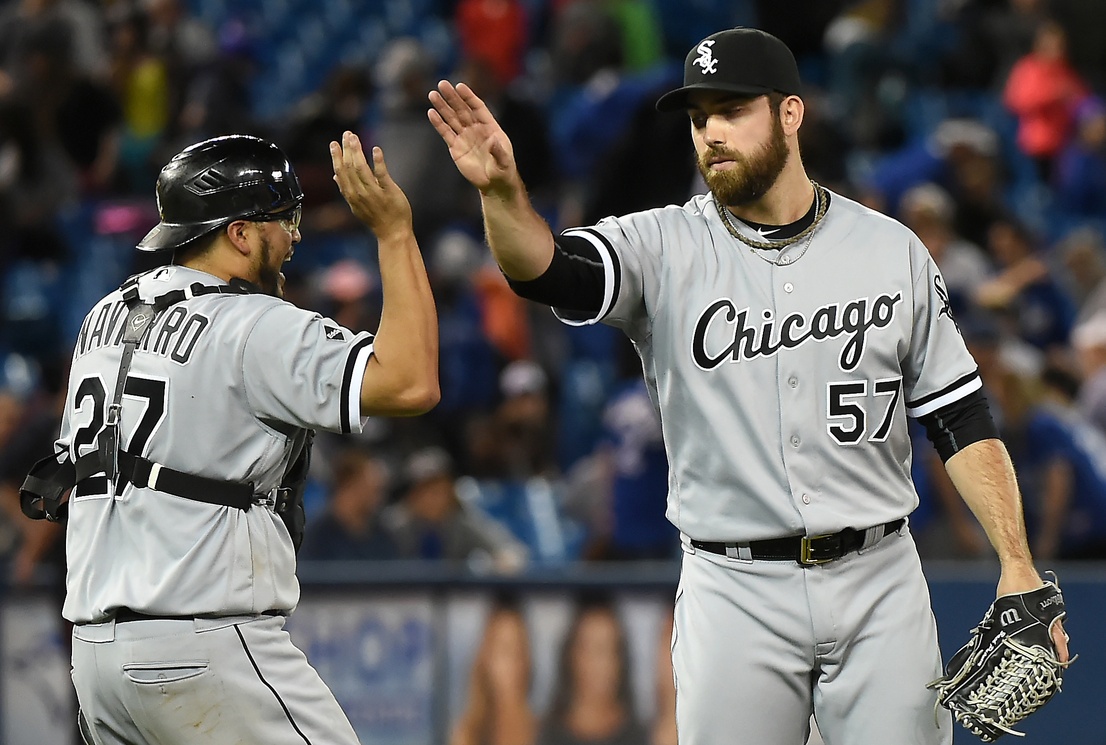The expression “no excuses” has always vexed me. After all, if you would have won a race, but someone snagged you in a net before you hit the finish line, that’s a pretty excellent excuse. I also understand the expression as something athletes say when a star player gets hurt, because you have to maintain a mentality that victory is possible, and that you should not quit, even if nobody in their right mind thinks a team is as good down their best players.
However, sometimes excuses really are pathetic.
Hawk’s asinine gripes about the schedule aside, when it became clear that the 2016 season was irretrievably tipping from surprise success to familiar and foreseeable failure, other excuses cropped up. “Well, Austin Jackson got hurt, and what were they supposed to do without Zach Putnam and Jake Petricka?” or something along those lines.
And sure, J.B. Shuck is a downgrade from Jackson, and the replacement-level guys who slotted in to middle relief in the wake of Putnam and Petricka were generally very bad. But even I–the biggest Zach Putnam fan in the world, who got in on the ground floor–would never argue that these losses are anywhere close to those of several playoff teams.
For example, the Indians can’t exactly paper over mistakes with money. Cleveland is an interesting comparison for the White Sox in that sense, as well as the fact that they projected to have problems scoring runs, and that the main strength of the team was a cost-controlled stable of quality starting pitchers.
Cleveland has already won 90 games. They did this despite only getting 43 horrible PAs from Michael Brantley, instead of the .319/.382/.494 line over 635 PAs per year they did the two years before. What’s more, they won’t get more than 150 innings out of either Carlos Carrasco or Danny Salazar. Yan Gomes had an OPS of .529 for ~250 PAs in between injuries.
The Mets are another offensively-challenged squad with financial limitations and a roster built around potent starting pitching. As of this drafting, they have a pretty good grip on the first Wild Card slot in the National League. Matt Harvey, Steven Matz, Jake deGrom, David Wright, Neil Walker…all of them lost for significant chunks of the season to injury.
These teams illustrate the failings of the White Sox more so than, say, the Dodgers, who can burn through hundreds of millions of dollars of brittle pitchers without blinking. And while the Mets are in the National League and get to play a lot more games against the worst teams in the majors, they and Cleveland lost a lot more really, really great players to injury than the White Sox did and succeeded anyway, despite being situated very similarly.
There are myriad reasons for that. The Mets spent in the offseason to retain an elite bat and brought in potential stopgaps like Kelly Johnson, James Loney, and (ugh) Jose Reyes when problems arose. They also opted for one of the best defensive catchers in the majors as the primary backup, especially with regard to framing, in the form of Rene Rivera.
Cleveland succeeded by actually hitting with the cheap free agents they signed, such as Mike Napoli, Rajai Davis, and even, to an extent, Marlon Byrd. They added Abraham Almonte for the modest price of an aging lefty specialist. And, they got Tyler Naquin with their 2012 first round pick instead of Courtney Hawkins.
There are a lot of reasons why the White Sox failed in 2016. Looking at how other organizations solved the same problems with similar resources helps put in perspective that although these problems are significant, they are not insurmountable with competence and creativity.
And keep that in mind if the organization tries to deflect blame for their mistakes on the losses of some pretty fungible players.
Lead Image Credit: Jerome Miron // USA Today Sports Images

3 comments on “These Are The Bad Kind of Excuses”
Comments are closed.